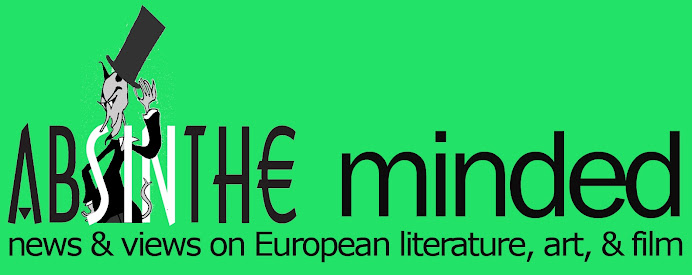From www.emanuellayr.com
TRISHA BAGA
&
NO BROW
Benjamin Hirte | Lisa Holzer | David Jourdan | Nick Parker | Philipp Timischl | Nicole Wermers | Westphalie
curated by Katharina Zimmer
Exhibition
12 Apr - 1 Jun 2013
Installation views / Ausstellungsansichten:
Trisha
Baga, Werner Eats His Shoe, 2013, One 2D projection on
glow-in-the-dark-paint and 3D projection on foam panel with spackle,
paint and half disco ball, format variable, installation detail, Galerie
Emanuel Layr, 2013
Trisha
Baga, Werner Eats His Shoe, 2013, One 2D projection on
glow-in-the-dark-paint and 3D projection on foam panel with spackle,
paint and half disco ball, format variable, installation detail, Galerie
Emanuel Layr, 2013
Trisha
Baga, Werner Eats His Shoe, 2013, One 2D projection on
glow-in-the-dark-paint and 3D projection on foam panel with spackle,
paint and half disco ball, format variable, installation detail, Galerie
Emanuel Layr, 2013
David Jourdan, Untitled (Neighborhood details, and others you may twitter), 2013, silkscreen on paper, 100 x 70 cm
Philipp Timischl, “Untitled (Full Motion/London)”, 2013, mixed media, 134 x 95 x 5 cm
Nick Parker, Untitled, 2013, dyed cement, epoxy resin, foil, 19 x 14 cm
Installation view, NO BROW: Benjamin Hirte | Lisa Holzer | David Jourdan | Nick Parker | Philipp Timischl | Nicole Wermers | Westphalie, curated by Katharina Zimmer, Galerie Emanuel Layr, 2013
Lisa Holzer, Chanel 539 JUNE passing under Carrot Juice, 2013, pigment print on cotton paper, 88 x 68 cm
right: Nicole Wermers, Müsliregal (Eigenmischung), 2013, powdercoated steel, Müsli, Fixings, 2.5 x 42 x 280 cm
Benjamin
Hirte, o.T. (the method board pattern), 2013, inkjet print on paper, 420
x 105 cm; Lisa Holzer Chanel 505 PARTICULIÈRE passing under Cocoa,
2013, pigment print on cotton paper, 88 x 68 cm
Benjamin Hirte, o.T., 2013, Wick cough sirup, Sinupret drops, plinth, 25 x 165 cm
Trisha Baga, Hercules, 2013, Blue ray 3D video projection onto piece of paper and 3D glasses, format variable, Galerie Emanuel Layr, 2013
Westphalie,
Trisha Baga & No Brow (Der Popper-Knigge), edited by Katharina
Zimmer, 2013, invitation cards and B&W photocopies (Der
Popper-Knigge, Hamburg, 1979), stapled; song (ABC, The Look of Love,
1982).
-
Trisha Baga & NO BROW
Benjamin Hirte | Lisa
Holzer | David Jourdan | Nick Parker | Philipp Timischl | Nicole Wermers
| Westphalie curated by Katharina Zimmer
11.04.2013 – 01.06.2013
Aesthetic
has long become a commodity of the twenty-first century, has already
been internalized by mass culture and has been implemented by the market
as a functioning construct of values, lifestyles and experiences.
Trisha Baga & NO BROW is
a trial version of two separate shows interlacing and corresponding
with each other. It takes as its point of departure the interest of
young artists in the appearance and design of the everyday and its free
circulation through visual circuits of distribution. By regurgitating
styles of their surroundings, the artistic positions in Trisha Baga & NO BROW
not only reflect the re-calibrated relation between applied and
autonomous art, but also probe the currency of design as a diagnostic
tool to uncover the hidden ecologies of the things that fill the
lifeworld. However utopian current approaches to design may be, this
show focusses on artistic strategies of re-staging and reiterating
designed networks, activities and services. Doing so, the artists that
come together in the show explore anew the modernist promise of
universality and democracy in today’s era, in which the modern dualisms
of subject and object have irrevocably proven obsolete.
After
all, as Bruno Latour would have it, only a conception of a democracy
expanded by a non-hierarchical inclusion of things, or non-human beings
and networks can meet the challenges of the present. The mode of
distraction here acts as the show’s undercurrent to parallel today’s
shifting relation between the tangible, the virtual and the detached
flows of information. This mode is reflected in the show’s format that
resembles a one-armed bandit. Trisha Baga’s
solo installation shall hereby act as the initiating coin – an
activating stream of consciousness, surfacing various strings of thought
and different layers of questioning the possibilities of being and
making today. By staging comments and works of Benjamin Hirte, Lisa
Holzer, David Jourdan, Philipp Timischl, and Nicole Wermers in the
gallery spaces next to Baga’s installation, NO BROW
will showcase the contemporary nexus of production and consumption and
the role of visual encodings and unfixing circulation within it. All
artists are invited to contribute to this investigation of contemporary
strategies of marketing and the “universal merging with the universality
of the commodity form in the amnesic code of exchange value.”1
1Egenhofer,
Sebastian, Abstraktion, Kapitalismus, Subjektivität: Die
Wahrheitsfunktion des Werks in der Moderne, München: Wilhelm Fink
Verlag, 2008.
-
-
Upcoming Art Fairs:
LISTE 18, Basel 11 - 16 June 2013 (Lisa Holzer)
Frieze Art Fair, London Frame 11 - 14 Oct 2013 (Benjamin Hirte)








